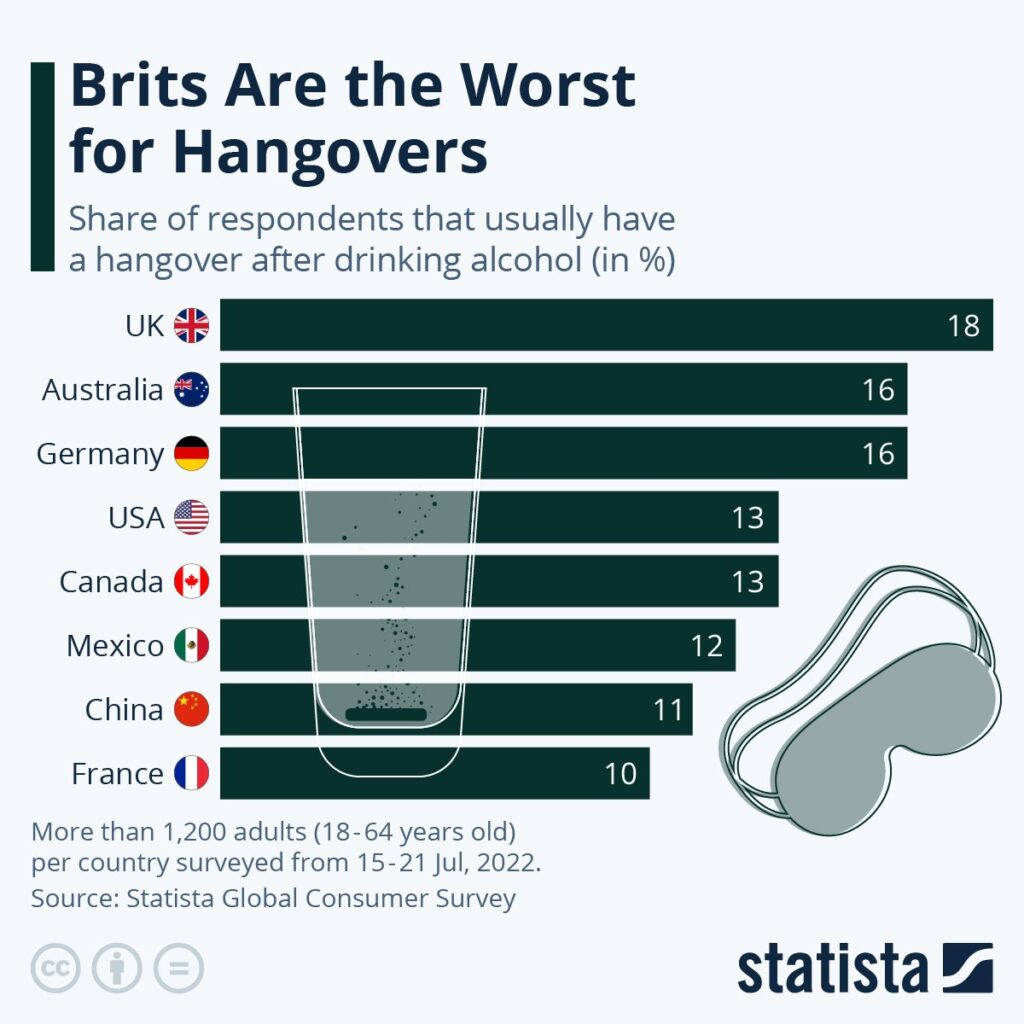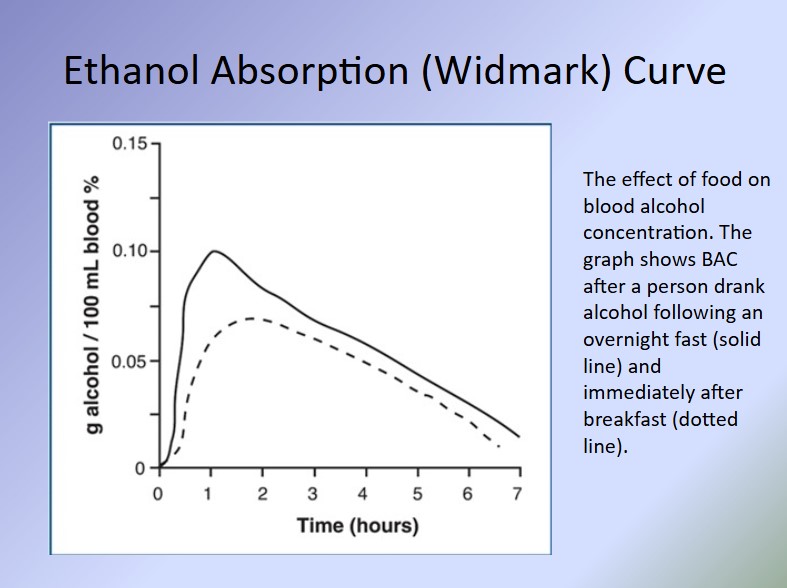The Chemistry of a Hangover – What Happens in Our Body After Alcohol Consumption?

Branko Drljača
Slap Spirits

Hangover
What actually happened last night? If you’ve ever opened your eyes after a wild night with a sense of confusion, dry mouth, and a headache as if a fanfare had played directly into your skull, you’re not alone. In fact, most of us have at least one (or more) stories that begin with the words: “I don’t really remember everything, but…”. It’s this universal human weakness that forms the basis of the cult movie The Hangover, a hilarious comedy about a group of friends who wake up in a hotel room in Las Vegas, with no memory of the previous night, and a tiger in the bathroom.
While the movie caricatures the situation to absurdity, its essence touches on something very real: the hangover. That sneaky ally of crazy nights, which arrives as the payment for every “just one more” drink. What happens in the body when we overindulge in alcohol? Why does the head pound, the stomach churn, and the brain refuse to cooperate? And, perhaps most importantly, how can we ease the aftermath?
In this blog, we’ll dive into the statistics and chemistry of a hangover—from biochemistry to psychology, from urban myths to scientifically proven methods of relief. While we may not find a baby in the closet like in The Hangover, we’ll certainly try to shed light on the mysteries left behind by alcohol.
How Much Alcohol Do We Really Consume, Statistically?
The following chart shows the development of the consumption of strong alcoholic beverages from 2000 to 2019.
The green line represents the sales of strong alcoholic drinks (JAP), which have been declining and are currently stagnating. The blue line clearly indicates that quality has become a very important factor in the sales of JAP. This means that, overall, less alcohol is being consumed, but there is a growing emphasis on its value and quality.

The specific figures for 2017 show that alcohol consumption in Serbia was significantly higher than in Bosnia. In Serbia, the average consumption was 6.9 liters of alcohol per capita, while in Bosnia, it was only 1.5 liters per capita. However, it’s important to note that these figures are based only on excise goods, meaning that the actual consumption in both countries is likely higher, as this statistic excludes homemade alcohol and non-taxed products.

Up until 2020, there were no significant changes in alcohol consumption trends. Serbia remained in 33rd place globally, with an average of 6.7 liters of alcohol consumed per capita. On the other hand, Bosnia ranked 113th, with even lower consumption than in 2017, at just 1.2 liters per capita.


This map shows the percentage of the population in Europe that consumes alcohol daily. Portugal leads the list by a wide margin, with a significant portion of its population drinking alcohol on a daily basis. In contrast, Turkey ranks at the bottom with only 0.5% of its population drinking alcohol every day, reflecting a cultural and religious context where alcohol consumption is much less prevalent.

The results from a 2022 survey, which involved 1,200 adults, show that the British top the list with 18% of people reporting regular issues with hangovers after consuming alcohol. This suggests that, on average, they drink the most at parties or social events compared to other countries in the survey. This higher incidence of hangovers in the UK could be linked to social drinking patterns, where alcohol is often consumed in larger quantities, especially during gatherings and celebrations.

What Happens in Our Body After Consuming Alcoho l?
After a fun evening with a glass of your favorite drink, many people face the unpleasant symptoms of a hangover, such as headaches, nausea, dry mouth, and overall exhaustion. These symptoms are not just a result of excessive alcohol consumption, but are the consequence of complex chemical processes occurring in the body. The way the body metabolizes alcohol and how these processes lead to a hangover will become clearer once you read the rest of the blog.
Metabolism of Ethanol in the Liver
Ethanol is the active component in alcoholic beverages, and it is quickly absorbed into the bloodstream, reaching its peak concentration in the blood about 30 to 50 minutes after consumption.
The chart below shows the alcohol concentration in the blood after consumption in the morning on an empty stomach (solid line) and immediately after breakfast (dashed line).

The Effect of Food on Blood Alcohol Concentration
The presence of food in the stomach can slow down the absorption of alcohol, reducing its peak concentration in the bloodstream. This is why drinking on an empty stomach often leads to a quicker onset of intoxication and a more intense hangover.
Phase One: Oxidation of Ethanol to Acetaldehyde
The liver plays a crucial role in breaking down ethanol through two main steps.
In the liver cells, the enzyme alcohol dehydrogenase (ADH) catalyzes the oxidation of ethanol to acetaldehyde (ethanal), a toxic compound responsible for many hangover symptoms. This reaction involves the transfer of a hydride from the ethanol molecule to the coenzyme NAD⁺ (nicotinamide adenine dinucleotide), with the assistance of a zinc ion located in the active site of the enzyme.

Phase Two: Oxidation of Acetaldehyde to Acetic Acid
Acetaldehyde is further oxidized to acetic acid (acetate) with the help of the enzyme aldehyde dehydrogenase (ALDH). Acetic acid is then involved in the Krebs cycle, where it is broken down into carbon dioxide and water, releasing energy. The breakdown of acetic acid is less problematic for the body.
Many Asians lack ALDH, and around 50% of people from the Pacific region, such as Japan and China, have a deficiency in the ALDH enzyme due to a genetic variation. As a result, the toxic substance acetaldehyde accumulates in the body. People with this deficiency experience what is called the “flushing reaction,” even after consuming small amounts of alcohol: they feel nauseous, their face turns bright red, they begin to sweat, and their heart rate increases.

Chemical Causes of Hangover Symptoms
Hangover symptoms are the result of a combination of dehydration, toxic metabolites, and disturbances in the neurotransmitter system.
Ethanol inhibits the release of the antidiuretic hormone vasopressin, which increases urine production and leads to dehydration. This explains the dry mouth and thirst commonly associated with hangovers.
Increased acetaldehyde concentration and disrupted serotonin balance can cause blood vessel dilation and inflammatory processes, resulting in headaches and fatigue.
Ethanol irritates the stomach lining and increases the production of stomach acid, which can trigger nausea and vomiting.
Alcohol disrupts sleep cycles, reduces REM (rapid eye movement) sleep, and causes fragmented sleep, making it difficult to feel rested after a night of drinking.
Prevention and Alleviation of Hangover Symptoms
Although there is no universal cure for a hangover, certain measures can help alleviate symptoms.
Consuming water before, during, and after alcohol consumption is crucial for preventing dehydration.
Eating foods rich in carbohydrates and fats before drinking can slow down alcohol absorption, as shown in Widmark’s chart.
Supplements like B and C vitamins, as well as minerals like magnesium and potassium, can help restore electrolyte balance.
The most effective way to prevent a hangover is by drinking in moderation and avoiding mixing different types of alcohol, which reduces the risk of hangover symptoms.
Conclusion
No matter how much we try to separate acetaldehyde as a component of the first fraction, we primarily do so for sensory reasons, as the body still produces it as a metabolite of ethanol in our system.
When separating the third fraction, this indirectly affects the intensity of a hangover. Medium and higher alcohols (long-chain hydrocarbons) such as propanol, butanol, pentanol, hexanol, octanol, and isoamyl alcohol are components of the third fraction, i.e., fusel oils. They are also responsible for hangovers because they interfere with brain oxygenation.
Understanding the chemical processes that occur in the body after alcohol consumption can help in preventing and alleviating hangover symptoms. Moderation in consumption, adequate hydration, and proper nutrition are key factors for maintaining health and feeling better the day after.
If you do reach for a drink, make it moderate and mindful. Smaller quantities of better-quality beverages, because science and your body will thank you the next day.
References:
Koschwald, S. (2012). Die Chemie des Katers. Universität Bayreuth ; Benzolring. (2020). Chemie des Katers. Chemie-Fortbildung ; BSI, (2022) Bundesverband der Deutschen Spirituosen-Industrie und -Importeure e. V. (BSI) ; Prof. Bensley – Forensic Toxicology ; Statista Portal ; IWSR and the IWSR Magazine (The Source for Wine & Spirits Analysis)
